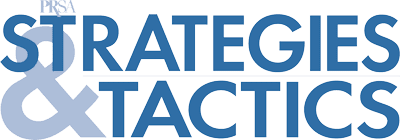Creating Team Structure to Cut Confusion and Boost Collaboration
By Rachel Esterline Perkins, APR
June-July 2025
As teams grow and evolve, roles and responsibilities can become muddled — leading to confusion, inefficiency and potential conflicts. This is particularly true in dynamic environments where new roles are created, restructures occur or in matrixed organizations with cross-functional dependencies.
For example, if your team has recently grown, then a manager-level staff member may own your organization’s social media strategy, and a newly hired social media specialist may execute the community management and copywriting aspects.
Suppose the roles and responsibilities of these team members are not clear. This may cause conflict, such as if the manager expects the specialist to take on a more significant role in planning the work or if the specialist hopes to drive the strategy.
The power of role clarity
Implementing a structured approach to role clarity can significantly improve team performance, collaboration and overall effectiveness of communications in your organization.
Clear roles and responsibilities can enhance productivity and efficiency, improve employee engagement, reduce conflict, improve collaboration, and support accountability and task ownership.
The RACI model is a powerful tool for delineating roles and responsibilities within a team or project. RACI stands for:
- Responsible
- Accountable
- Consulted
- Informed
RACI roles for your team
One helpful exercise for teams is to create a RACI matrix, which defines everyone’s roles and responsibilities.
Before doing this, it’s essential to tailor the RACI definitions to your team’s specific organizational context. The following definitions can be a solid starting point:
- Responsible: These individuals manage or execute the work. They complete tasks, move projects forward, solve problems, and support decision-making. Multiple people can share responsibility for a task or project.
- Accountable: This person owns the work and has final authority. They may approve deliverables and make ultimate decisions. Typically, only one person is accountable for each task or project, though some matrixed organizations may have shared accountability.
- Consulted: These active participants provide input and collaborate with those responsible. While their opinions are sought and valued, their suggestions may not always be implemented.
- Informed: These stakeholders need to be kept updated but are not directly involved in decision-making. They often need this information to align their work with the project outcomes.
To tackle this exercise, create a team matrix within a spreadsheet. Column A should reflect bodies of work with a level of specificity that makes sense for your organization. For example, “Communications” may be broken out further to include specific tactics or channels if the work is divided among team members.
For other organizations, work may be separated by business unit, service, department or product. It’s best to break down work into detailed tasks to avoid ambiguity.
The following columns should reflect the names and titles of staff, particularly the communications and marketing team. However, you might also include other cross-functional partners who contribute to the work.
From there, you will select their role — Responsible, Accountable, Consulted or Informed. An essential part of the exercise is reviewing the matrix and having productive team discussions about roles, as it’s common for there to be some disagreement — especially if your team has recently undergone changes. For example, some employees may believe they should be Consulted rather than Informed. Others may want to limit those marked as Consulted because it may slow decision-making in the future.
When facilitated effectively, these discussions ultimately clarify employees’ responsibilities within a team. Be sure to review the matrix regularly as roles evolve or projects change.



